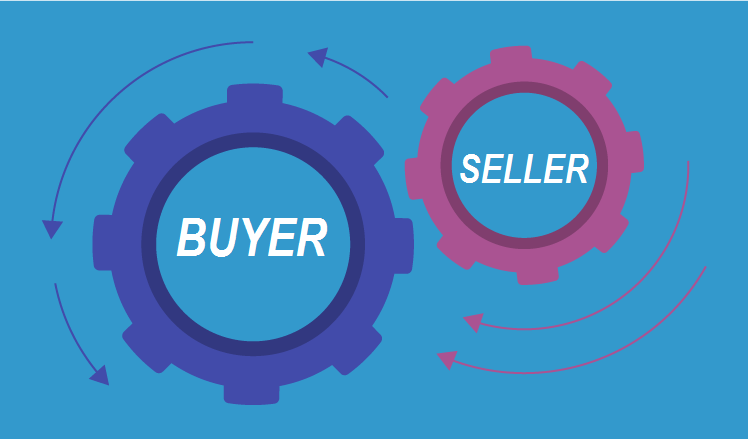The Rational Behind Various Deal Structures
This article will cover the rationale and thought process behind various deal structures within PEO mergers & acquisitions. While the industry is in a state of consolidation, most PEO business owners have not experienced a deal process. Therefore, I thought we’d provide some insight into various deal structures and the reason behind these components. We won’t cover everything in this article, but we will touch on the following:
- Upfront Cash
- Equity Rollover
- Proverbial “2nd Bite of the Apple”
- Earn Out & Provisions
- Employment Contract Requisites and Perks
- Investor Hierarchy
Hopefully this information will provide PEO Owners with a foundation of how a deal may be structured if/when they decide to enter the market.
Common Deal Structure Overview
Most deals will have many of the components we have listed included within the deal structure. It is common to see a deal that includes an upfront cash consideration coupled with a requisite equity roll and earn out provision. Moreover, we often see key personnel included within employment contracts and the proverbial 2nd bite of the apple is often touted with private equity buyers. Depending on the deal size, we may see various investor hierarchy deployed, i.e. primary investor, debt equity, secondary investor, etc. We’ll take all of these areas one by one, but I wanted to provide some clarity surrounding the typical deal structure.
Upfront Cash
Upfront cash simply refers to the cash the seller receives at the time of transaction. In other words, if a deal’s valuation is $50mm, the buyer may provide $35mm at closing (70% upfront cash), require an equity roll over of $10mm (20% of the valuation) and have a $5mm earn out provision (10% of the valuation) based on structured criteria. (Please remember this example deal structure as we will refer to it throughout the article). We have seen quasi all cash deals where the buyer pays out all cash with no earn out, though the seller may roll some equity over in that scenario. However, these deals are rarer.
Equity Rollover
An equity rollover is a percentage of the seller’s equity that is rolled over into the new entity. If we view the example in the previous section, the seller was required to roll $10mm of the enterprise value into equity within the new company (20%). The rationale behind a buyer requesting rollover equity is simple. To align interests of the buyer and seller post-transaction. I have always said:
The seller is looking to maximize their ROI at the time of transaction, the buyer is looking to maximize their ROI post-transaction.
– Rob Comeau
The timing of ROI is two opposing forces. Therefore, the buyer will utilize multiple tactics to align the interests of the buyer and seller post-acquisition. One of these tactics is an equity roll. If the seller rolls equity into the new entity, the seller is incentivized to protect and grow the value of that equity post-transaction.
2nd Bite of the Apple
What does the term second bite of the apple mean? It doesn’t mean that you’re still hungry for fruit. Rather, it refers to a second liquidity event. For example, if a private equity buyer bought your PEO, they may continue to invest in other PEOs and exit the combined entity in five years. The idea is that the base EBITDA and multiple will grow between the time they invested in your company and the time they exit the combined PEO entity. As a result, the equity you rolled at the time of your transaction should be worth more than the cash value at the time you rolled it.
It is extremely rare that a PEO owner’s equity cash value at the time of sale doesn’t mature at the time of the investor’s exit. The question is, how much will it mature? The rationale behind touting the second bite of the apple is to motivate the seller to roll the requisite amount of equity to get the initial deal done. With any equity roll there is an element of risk. However, if the PEO sells to a qualified buyer with a solid strategy, the risk is minimal compared to the upside reward.
Earn Out & Provisions
An earn out is another tactic used by the buyer to align interests with the seller post-transaction. In our previous example, of the $50mm valuation, the seller had a $5mm earn out. This earn out is future cash based on specified provisions within the earn out structure. For example, if the seller had an adjusted EBITDA (AEBITDA) of $7mm at the time of transaction, the buyer may stipulate that the earn out ($5mm) will be paid over the course of two years at $2.5mm per year, as long as the seller achieves a 10% growth on profit, EBITDA, GP$, or other criteria. If we used EBITDA in this example, the seller would need to have an EBITDA at the end of year one of $7.7mm to receive the earnout and $8.47mm at year two.
The reason I mentioned earlier that it is rare for all cash deals, is that it removes the post-acquisition motivators of the equity roll and earn out provision. Understanding the second half of the quoted statement “the buyer is looking to maximize their ROI post-transaction” gives insight into why they propose equity rolls and earn out provisions. Earn outs can get creative so make sure you understand the framework of the earnout prior to executing the deal.
Employment Contract Requisite & Perks
These kinds of contracts can be all over the place with their structure so we will just hit on some common high notes. Typically, these contracts will require the ownership to remain on between 2 and 5 years. Additionally, they will include non-compete clauses for 2 to 5 years after the employment agreement has been severed. The contract will hold the executive to certain ethical standards and may include production perks. However, perks may not be part of the contract if the buyer has already put in an earn out provision, though we do sometimes see both present. Production perks could take the form of bonuses, increased equity, etc. The rationale behind an employment contract is to maintain leadership within the purchased entity and protect the buyer from the seller leaving, immediately starting a competing PEO, and taking all of the clientele away. One key area in the employment contract to be negotiated may be provisions by the investor to cover some or all of the tax burden the seller will incur on their rolled equity, though that is not the only negotiation point in this agreement.
Investor Hierarchy
Why do we call this section investor hierarchy in lieu of potential investment players within a deal? Simple, there is a hierarchy with payment within the investor structure. Depending on the class of shares, parties get paid in a certain order. This typically doesn’t matter unless the stuff hits the fan. If an investment goes under, or sells for less than the investment amount, lenders and class A shareholders will get first dibs on any proceeds, then class B, and so on. The parties at the lowest part of the hierarchy are in the worst position. The rationale behind investor hierarchy is to protect the parties that have put up the most cash in case of a bad investment scenario.
Outside of the hierarchy, a deal may include a single investor, a single investor and some debt financing, or it may include multiple investors with or without debt financing. Moreover, the debt financing may have multiple tiers to it as well. Without getting too technical, the bottom-line is that a deal may include more than one party within its investment structure, but it will have a majority investor leading the way. The rationale behind multiple investors may include cash restrictions or spreading the risk. It may also be cheaper for the investor to access debt financing rather than the fees associated with utilizing equity capital to its equity investors.
Final Thoughts
Hopefully this article provided you with some insight into the rationale behind some of the most common deal components. For additional articles on PEO M&A, please click here.
If you are a PEO owner and would like to learn more, feel free to contact the Author, Rob Comeau at rob.comeau@biz-rc.com.
Author

deal rationale
deal rationale
deal rationale
deal rationale
Rob Comeau is the Founder of NPG and CEO of Business Resource Center, Inc., a business consulting and M&A advisory firm with a niche focus on the PEO industry.

 using WordPress and
using WordPress and